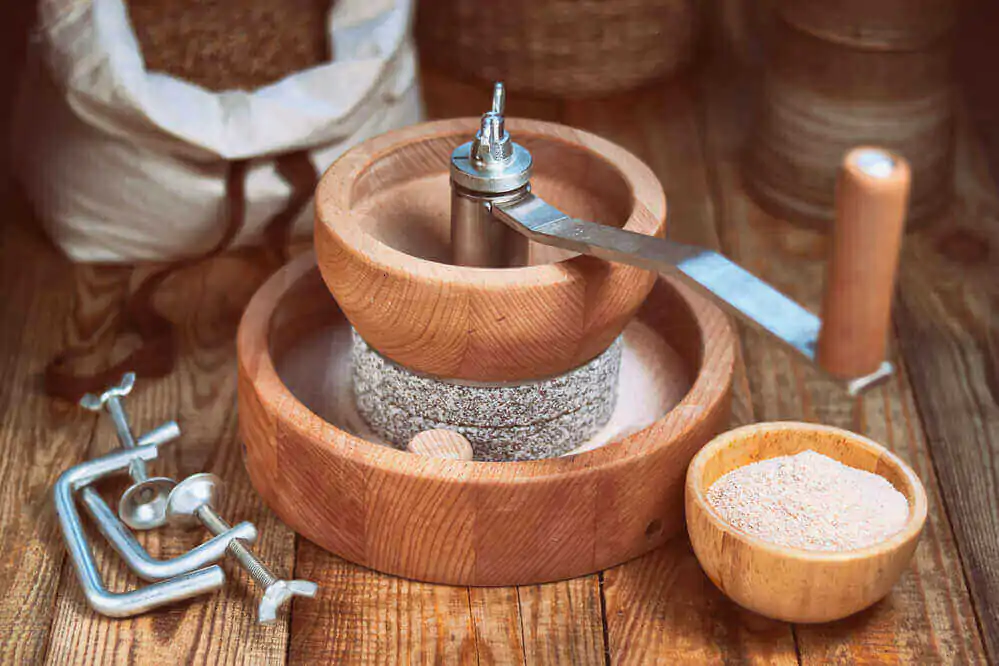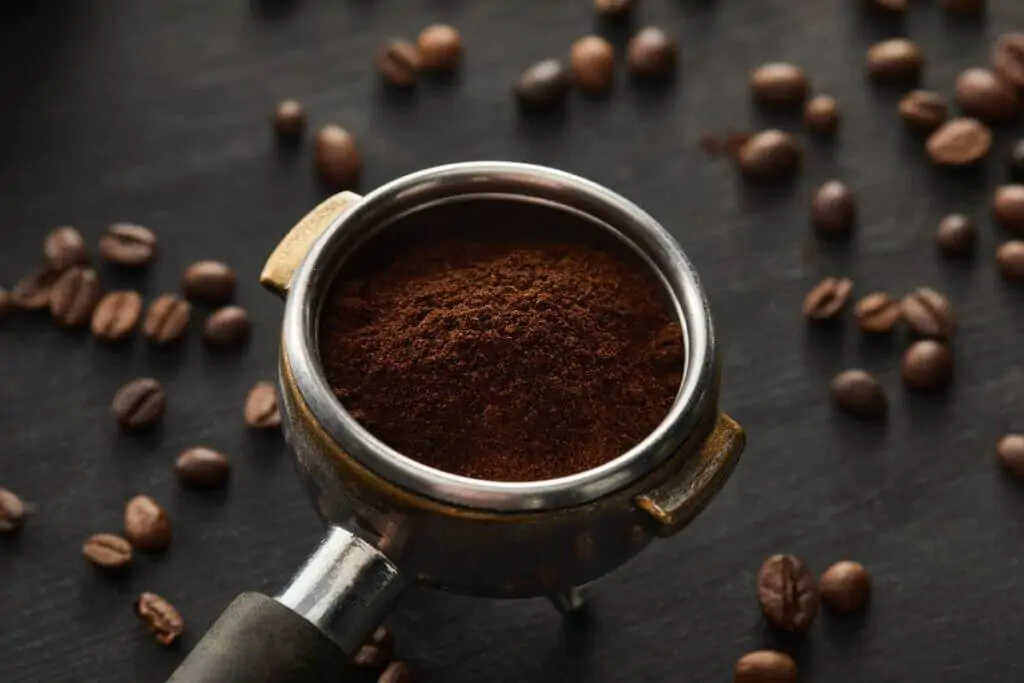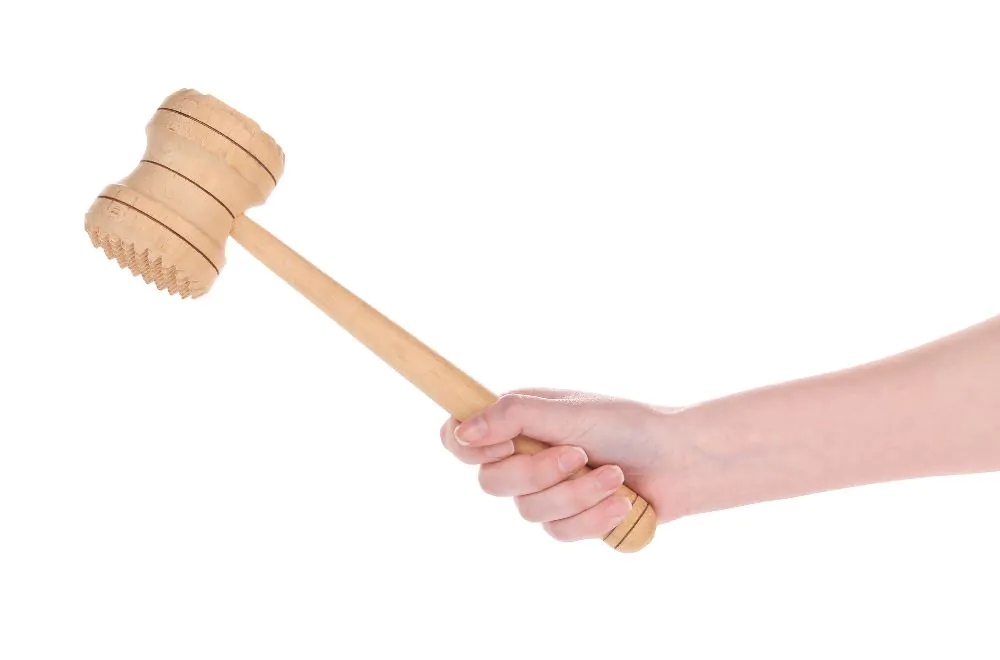Coffee grinders help break down beans for easy brewing. But what if you don’t have a coffee grinder? Let’s learn how to grind coffee beans without a grinder.

To all coffee lovers who brew their coffee at home: Do you prefer pre-ground coffee or whole beans? An online survey found that more people prefer to buy pre-ground coffee in stores and online for convenience. Pre-ground coffee gives busy individuals more time to do something else.
However, grinding whole-bean coffee at home is the key to fresh, flavorful, aromatic coffee. For the best results, a coffee grinder is recommended, but it’s not a necessity. If you don’t have a coffee grinder at home, check your kitchen and look for the alternatives listed below to enjoy freshly ground batches of coffee. Check out our coffee grinder vs. grain mill guide.
Types Of Coffee Grinds
Grind consistency is critical in making the perfect cup of Joe. While instant coffee and pre-ground coffee are excellent for faster preparation and cheaper than whole beans using coffee grinders, crushing coffee at home lets you control the type and size of the grind.
Grinding right before brewing will also make for a fresher, more flavorful brew. The quicker you use freshly ground coffee, the less oxidation occurs. By exposing coffee to air, the oxidation process damages the flavors and aroma.
Grinding your coffee yourself is also a perfect way to accommodate your coffee tastes, not only in terms of grind size for different brewing methods, but you can experiment with how weak or strong you like your coffee or blend different kinds of beans together.
Check out our reasons why freshly ground coffee is better. Here is a guide for the correct type of grind for each cup of coffee.
Coarse
The size and texture of a coarse grind look like rock salt. Because of its large particles, longer brewing will fully extract its flavor. It’s excellent with a French press, and a coarser grind is best for hot and cold brews.
You might also be interested in our coffee grinder vs. blender guide.
Medium
Medium grind has a sand-like consistency and is the most popular. This type is best for drip coffee and pour-over coffee.
Fine

When it comes to fine coffee, the texture is similar to a lump of regular table sugar or salt. Fine-grind coffee is excellent for brewers such as espresso machines, Moka pots, and AeroPress.
Super Fine
A super fine’s consistency and feel are similar to powdered sugar, where you will not be able to feel the grains. Turkish coffee commonly uses this pulverized grind.
Coffee enthusiasts who want to make their coffee at home should invest in tools and machines to get café-level drinks. If you want to get an idea of a coffee grinder’s price, check out our guide on How Much Does A Good Coffee Grinder Cost?
Why Grind Size Is Important When Making Coffee
More casual coffee lovers might wonder why grind size even matters. Different grind sizes are suited to different styles of brewing.
Larger, coarse grounds are typically used for slower brewing methods, like cold brew coffee and French press coffee, and finer for a quick espresso shot.
The smaller the particles, the larger the coffee surface area is, which means the brewing method will be faster. The texture and size of the grinds influence the speed at which the water passes through, which brings out different flavors.
If you used coarse grounds in an espresso machine, the coffee would be under-extracted as the water did not have enough time to extract the flavors from larger coffee particles. Likewise, some grind sizes are not compatible with some brewing methods; super fine coffee would escape the mesh in a French press and ruin the texture of the drink. Not to mention, using fine grounds for brewing methods that require larger particles will result in an over-extracted drink.
Can You Brew Coffee Beans Without Grinding Them?
You can brew coffee without grinding, but most people prefer not to do so. The reason we grind coffee in the first place is to increase the surface area. An increased surface area allows the water to extract the flavors from the coffee quickly.
One of the common ways to brew coffee beans without grinding them is to simmer the whole beans on a stove for one hour. You can also consider making a cold brew, but you will likely need to use a lot of beans to maintain the same flavor.
What Happens When Coffee Beans Are Not Ground Properly?
When coffee grounds are not ground properly, it impacts the quality of the brew. An over-extracted brew tastes bitter, while under-extracted coffee is too bland.
If the grinds are uneven, some will over-extract, and others will under-extract. Although you might assume these flavors would balance each other out; instead, the finished cup of coffee will taste odd. Coffee brewed with uneven grounds will usually taste sour and unbalanced.
If you cannot grind your coffee evenly, you can put the grounds through a sieve. This way, you can separate the finer grinds from the coarse ones and brew accordingly.
Using the wrong grinds can also make your life difficult when it comes to cleaning your equipment after. For example, if the grinds are too fine, they can get stuck in the mesh of a French press.
Best Coffee Grinder Alternatives
A coffee grinder is still the best option for grinding coffee at home. Whether you’re currently low on cash and can’t purchase one, or you want to change the grind of pre-ground beans, here are some substitutes you can use:
Mortar And Pestle
Mortar and pestle are not only used in crushing, meshing, and mincing various ingredients. It’s also the most authentic and native way to grind coffee beans.
This method can create all types of grinds – from coarser grounds for a percolator to finer grounds for Chemex. Since this is a time-consuming and labor-intensive alternative to a coffee grinder, the result depends on your patience.
Use the pestle to crush the beans, and then start moving the pestle in a swirling motion until you get the right consistency. One advantage of using this method over coffee grinders is it is easy to clean.
Rolling Pin
It’s another by-hand method mainly used to get coarse to medium coarse grinds. More time and labor are needed to get medium to finer grinds.
First, put your coffee beans in a sealable bag and crush them using the rolling pin. After airing it out, seal it, then apply a little pressure. Gently roll your pin to grind the beans.
Be patient, and keep rolling your pin back and forth until you have the right consistency. Use a reliable freezer bag like this Ziploc Gallon Food Storage Freezer Bag so it won’t burst while you’re rolling the pin.
You can also utilize a sealed container to store fresh coffee grounds for at least a week. If you keep them in the freezer, do not leave them there for too long to avoid freezer burn.
Alternatively, if you don’t have a mortar and pestle or a freezer bag, you can put your coffee beans in a bowl and crush them using the top of the rolling pin using the same technique.
Blender
Using a blender to grind coffee is one of the most popular alternatives for coffee grinders. Blenders are great for getting any type of coffee grind.
However, as blenders are commonly for softer ingredients, prolonged use can cause overheating. To ensure equal grinds, pour at least one-quarter to one-half cup of the beans into your blender, and always check the consistency by scooping or stirring the grounds.
To get the same results you would with coffee grinders, ensure that the process will only take 20 to 30 seconds to avoid burning your coffee. Use pulse or short bursts instead so you can control the grind and temperature.
Food Processor
Food processors are a must-have in any kitchen for their many uses. This appliance is bigger than regular blenders that can grind and mix various food ingredients. It works similarly with blenders and coffee grinders but is best if you need to mill a considerable amount of coffee beans.
A food processor is excellent at creating coarse to medium grinds. This appliance can also produce finer grinds for any type of coffee. To avoid overprocessing, grinding should only take 30 seconds or six sets of three to five seconds in a pulse setting – you’ll also need to prevent your coffee from overheating.
Spice Grinder
Coffee grinders have conical burrs to grind coffee beans, whereas spice grinders have blades used to mince various spices and herbs. This blade can also grind soft and hard spices like coffee beans.
A spice grinder’s overall design is very similar to most coffee grinders. However, expect that the grounds will still be inconsistent and require more work than a regular coffee grinder.
Aside from spice grinders being easy to clean, you can even add nuts and other spices to your grind to experiment with how they’ll affect the taste of your drink. Ensure your spice grinder is clean before using it; otherwise, you’ll end up with a funky-tasting brew.
Meat Mincer
You can put coffee grounds through a meat mincer to break them down. This method is best suited for coarse grounds, as a mincer will be unable to get the powder-like consistency we associate with espresso.
If you are using a meat mincer, ensure it is brand new or has been thoroughly cleaned. While infusing any remaining meat in the crevices with your coffee will likely taste foul, you’ll also have to worry about the spread of bacteria if your coffee is in contact with raw meat residue. The temperature and duration of brewing are unlikely to kill bacteria from raw chicken or pork.
You can use a hand mincer or an electric mincer to produce ground coffee beans. Alternatively, you can use a meat tenderizer. You will still have to ensure it is squeaky clean before using it to grind coffee or anything you don’t plan on cooking.
Frying Pan Or Pot
If you can’t find your rolling pin, fear not! There are other kitchen utensils you can use to grind coffee.
You would grind coffee beans using a frying pan or pot the same way you would use a rolling pin. You place the desired amount of coffee in a sealed plastic bag. Then, crush the beans with a heavy frying pan or pot until reaching your desired consistency for your brewing method.
To do this, you will need to press down firmly on the coffee beans with the pan or pot rather than slamming them on your counter. You should avoid using a hammer motion, as this is likely to damage your equipment and kitchen and will not result in an even grind.
Mallet

You might find a small mallet hammer offers more control than a frying pan or the rolling pin method. With this method, you would still put your coffee beans in a secure Ziploc bag on top of a cutting board. You may want to place parchment paper over the cutting board to protect it.
Using some elbow grease, hit the coffee until it breaks into the appropriate grind size for your coffee maker. Since the surface area of the mallet is smaller than some of the other options, this method can help get a consistent grind. However, the results still depend on how much patience you have.
Grind Coffee Using Kitchen Tools And Devices
While coffee experts and baristas recommend using proper machines and tools like coffee grinders in making coffee, not everyone can just visit the store and whip out cash for expensive items.
Check out our Best Coffee Grinders for Home: Ultimate Buyer’s Guide before purchasing your first coffee grinder. If you’re looking for more ways to grind coffee beans, whether temporary or long-term, here are the other options you may be interested in:
- Immersion Blender
- Magic Bullet
- Hammer
- Knife
- Garlic Press
- Cheese grater
